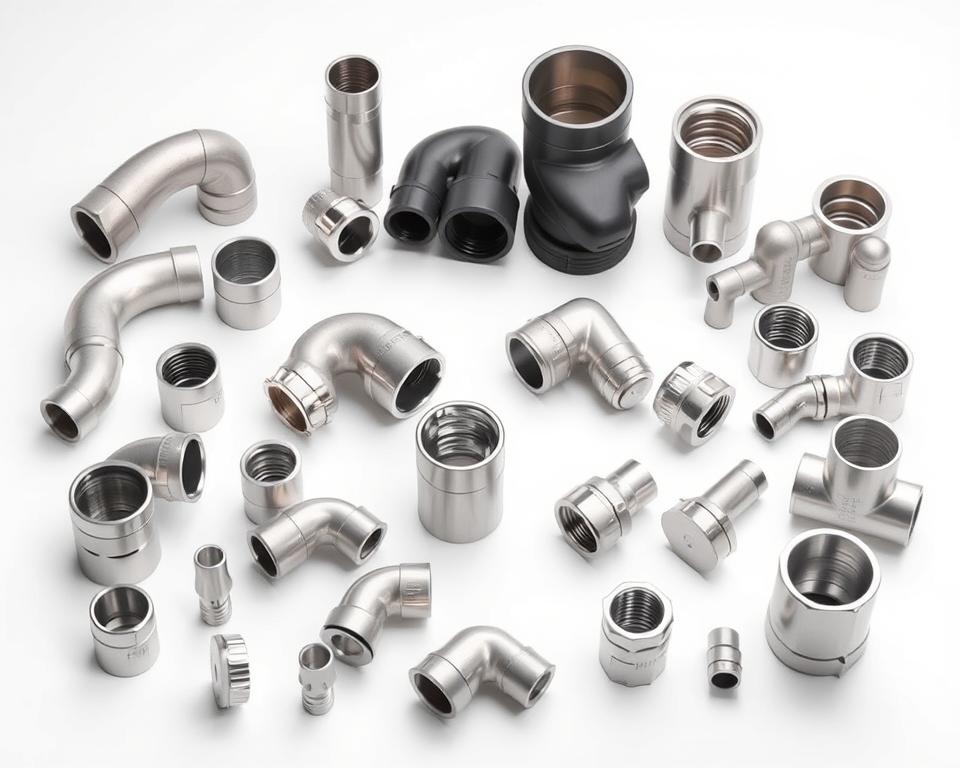Ensure The Safety of Your Business
Did you know businesses across America experience an annual property crime rate of 25%? With criminal activity becoming more unpredictable, safeguarding your company has never been more important. Commercial Security Guards offer crucial commercial protection services, created to tackle the unique challenges organizations face. With professional security officers from trusted companies like Divine Protection Services, you can safeguard your assets, keep your staff safe, and rest easy as a business owner with event security guards.
Key Conclusions
- Crime rates pose significant risks to businesses, highlighting the importance of security.
- Guard services for businesses offer bespoke protection approaches.
- Trained security personnel boost safety and streamline operations.
- Collaborating with reputable commercial security providers brings peace of mind.
- Putting resources into business security is a forward-thinking risk control measure.

The Growing Need for Business Security in Today’s Environment
In today’s environment, companies confront escalating risks including theft, property destruction, and employee-targeted violence. Such hazards emphasize why robust commercial security services are needed. The National Retail Federation reported in 2019 that businesses lost around $61.7 billion to shrinkage. This eye-opening statistic shows how crucial proper security is for asset protection and business continuity.
Opting for professional security services to protect commercial properties represents a strategic step toward risk reduction. Having a conspicuous security presence deters potential criminals effectively. Working with a well-known commercial security firm provides tailored strategies to tackle particular weak points. This fortifies overall protection and grants peace of mind.
What Are Commercial Security Guards?
Commercial security guards are trained professionals dedicated to safeguarding businesses against various threats. Their main duties involve preventing theft, vandalism, and illegal entry. These guards serve a vital function in upholding a secure work setting.
Beyond guarding the premises, commercial security guards deliver crucial services. They handle access management, oversee surveillance systems, and act swiftly during crises. Their on-site presence discourages illicit behavior and nurtures safety feelings for staff and patrons.
Skilled security officers come armed with the know-how and abilities to tackle security issues adeptly. They undergo rigorous training that prepares them for different scenarios. This guarantees their proper response to crises. The role of these guardians extends beyond mere presence; they enforce policies and act as a first line of defense, protecting vital business assets.
Commercial security guards prove their effectiveness by pinpointing weak spots and establishing risk-reduction strategies. They frequently utilize precautionary tactics like risk analysis and the adoption of safety protocols. Their dedication allows businesses to function seamlessly without persistent fear of interruptions.
Key Advantages of Hiring Commercial Security Guards
Hiring commercial security guards offers significant benefits for business operations. Their primary duty involves deterring criminal acts, serving as a conspicuous barrier against theft and unlawful behavior. Simply having them on-site helps preserve a secure atmosphere.
Commercial security guards are also trained to respond quickly to incidents. Their rapid action can prevent situations from getting worse, ensuring the safety of employees and customers. Businesses rest assured that a trained professional is continually on-site.
These guards compile comprehensive documentation of incidents, aiding in recognizing trends that require focus. This information aids in creating custom security solutions, preventing future crimes. It’s a proactive approach to security.
A further major perk is their expertise in conflict de-escalation and medical aid. This skill set allows them to handle crises effectively, ensuring issues are resolved quickly and correctly. It creates a more secure and welcoming environment for everyone.
The many advantages of hiring commercial security guards are indisputable. Their know-how enhances security and elevates the overall experience for customers and staff. It’s a valuable investment for any business.
How Business Safety is Improved by Commercial Security Guards
Commercial security guards play a crucial role in elevating business safety. They act as a powerful deterrent against threats, making their presence a reassuring sight for employees and customers. By vigilantly observing the site, they immediately confront odd behavior or incidents.
In critical situations, their swift intervention can prevent further harm. They are prepared to manage diverse scenarios, maintaining security and order. This defends persons and properties alike, positioning them as central to robust security.
They also foster a safe setting, increasing staff confidence. Reducing safety worries lets employees concentrate more on their tasks. Consequently, productivity and morale see a rise. Their anticipatory methods help keep business safety at the forefront.
| Security Benefit |
Detail |
| Clear Deterrent |
Having guards on-site deters criminals. |
| Emergency Response |
Prepared to react swiftly to urgent situations. |
| Preserving Order |
Helps maintain a calm and secure environment. |
| Boosted Employee Confidence |
Increases staff focus and productivity. |
| Avoiding Loss |
Minimizes the risk of asset loss and property damage. |
Advantages of Hiring Professional Security Services
Expert security offerings present multiple benefits that enhance business functions. A key advantage is diminishing monetary risks from crime. Companies with strong security measures often see lower insurance premiums.
A protected setting also raises worker productivity. If staff feels secure, they concentrate more, yielding greater productivity and satisfaction. Professional security services build trust with customers, improving brand loyalty and encouraging repeat business.
Having a professional security presence lets businesses focus on their core activities. This reduces the distraction of security concerns. Leaders can then allocate resources more effectively, ensuring a safe space for employees and customers.
Selecting a Suitable Commercial Security Firm
In choosing a commercial security provider, it’s essential to assess various important factors. First, evaluate the expertise of the firms under consideration. Look for those with a solid track record in the field. Their training regimes ought to meet stringent criteria, preparing staff to address diverse security challenges.
Also consider if the security firm aligns with your corporate culture. They should reflect your organization’s ethos and way of operating. Clear communication plays a pivotal role in a successful alliance. Review their service history to assess their dependability and responsiveness.
Another vital aspect is the breadth of services they provide. Companies that provide a wide range of services are often better equipped to handle different security needs. Assess their technological capabilities, such as surveillance systems and alarm monitoring, which can significantly improve security.
Carefully screening your choices is vital for informed decisions and long-term partnerships. By assessing these elements diligently, companies can identify a dependable commercial security provider. This alliance will ensure effective protection of your assets and staff.
Importance of Armed Security Guards in Commercial Environments
Armed security guards are essential for safeguarding commercial environments. They serve pivotal functions for companies storing valuable assets or located in high-crime regions. They are trained to swiftly spot and handle dangers, ensuring the safety of personnel and property.
Armed guards form an integral component of a business’s security strategy. They complete comprehensive training for emergency situations, even those necessitating the use of force. Their prompt response helps thwart criminal acts, offering peace of mind to owners and staff.
When looking at armed security, companies must consider several factors:
- Nature of the business and its assets
- Site location and area crime data
- Allocated budget for protection services
- Compliance with local regulations regarding armed security personnel
Opting for armed security services enhances a business’s protection. Organizations must aim to craft a safe environment that fosters trust and productivity.
Business Security Success Stories
Various case studies showcase the success of employing commercial security guards. A notable example is a national retail chain that saw a 25% drop in shoplifting after hiring security guards. This shift took place in as little as three months. The implementation not only boosted loss prevention but also made the shopping environment safer for customers.
An upscale electronics retailer also benefited from hiring professional security. Staff felt safer, enabling them to concentrate more effectively on their duties. This example shows how investing in security can improve business operations and protect valuable assets.
These stories underscore the value of hiring skilled security teams. They show the significant benefits of a proactive security approach. Security guards for retail settings play a crucial role in cutting theft, enhancing customer relations, and fostering a robust security culture. This culture is essential for a business’s overall resilience.
The Impact of Office Building Security on Employee Morale
Effective office building security is key to boosting employee morale. When workers feel safe, their job contentment rises. This security comes from the presence of professional security personnel, creating a safe atmosphere. Understanding that effective security measures are deployed lets employees remain centered on their work.
Investing in top-notch security measures boosts productivity. Employees in protected settings face reduced stress, resulting in improved work-life equilibrium. Enhanced morale further equates to decreased employee turnover. Companies that value safety foster loyalty and commitment among their staff.
Effective security setups likewise encourage team cohesion. Teamwork thrives when employees perceive their environment as secure. This collaboration fuels creativity and resolution skills, which are critical for enterprise success. Managers should acknowledge that office security boosts morale and embed it into their strategies.
Merging Security with Business Workflows
Incorporating security services into business procedures is crucial for robust protection. Companies like Divine Protection Services push for security protocols that fit with existing workflows. This approach ensures a unified and effective security strategy.
Training employees on security awareness is critical in this integration. Equipping workers to spot and respond to dangers helps organizations establish a forward-thinking security ethos. Explicit incident response protocols further enhance security.
Integrating cutting-edge tech in security operations can streamline the process. Security management tools provide real-time oversight and rapid reaction to incidents. Frequent assessments of security procedures assist in countering emerging risks.
Ultimately, integrating security into business operations shields assets and fosters a secure setting for everyone. This approach benefits everyone involved.
Why are Commercial Security Guards Essential for Business Protection?
The need for commercial security guards has grown significantly. These guards are vital in protecting a company’s assets, employees, and reputation. Their skills and experience contribute to building a secure setting. This permits companies to run efficiently, free from security worries.
Choosing to invest in business protection services is a strategic move. It strengthens the company’s integrity and ensures continuous operation. This choice goes beyond just hiring people; it brings peace of mind to staff and clients. A strong security presence discourages crime and promotes a safe workplace culture.
During crises, these guards provide instant assistance, managing various incidents adeptly. Their presence reassures employees, boosting morale. Recognizing the importance of these professionals helps businesses understand that security is key to their success.
Final Thoughts
In today’s fast-paced world, protecting your business is more critical than ever. Commercial security guards play a key role, acting as a crime deterrent and a cornerstone of business safety. They help protect assets and guarantee a secure environment for staff and patrons.
As operational challenges escalate, investing in professional security is imperative. Organizations utilizing commercial security guards are more adept at managing risks. They obtain peace of mind with personalized solutions crafted to combat their vulnerabilities.
Collaborating with a reputable provider such as Divine Protection Services delivers tailored security strategies. This approach not only safeguards assets but also enhances employee welfare. It results in a safer and more efficient workplace.









